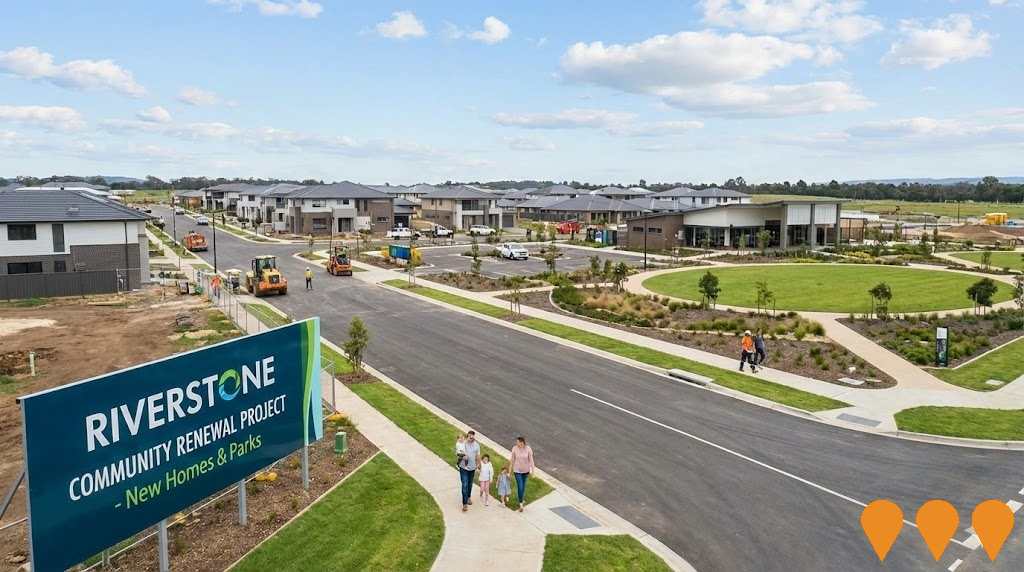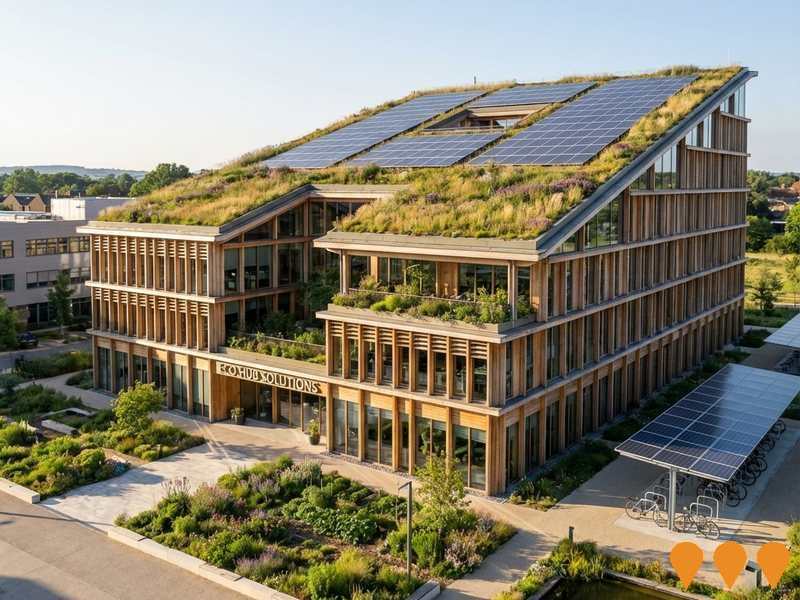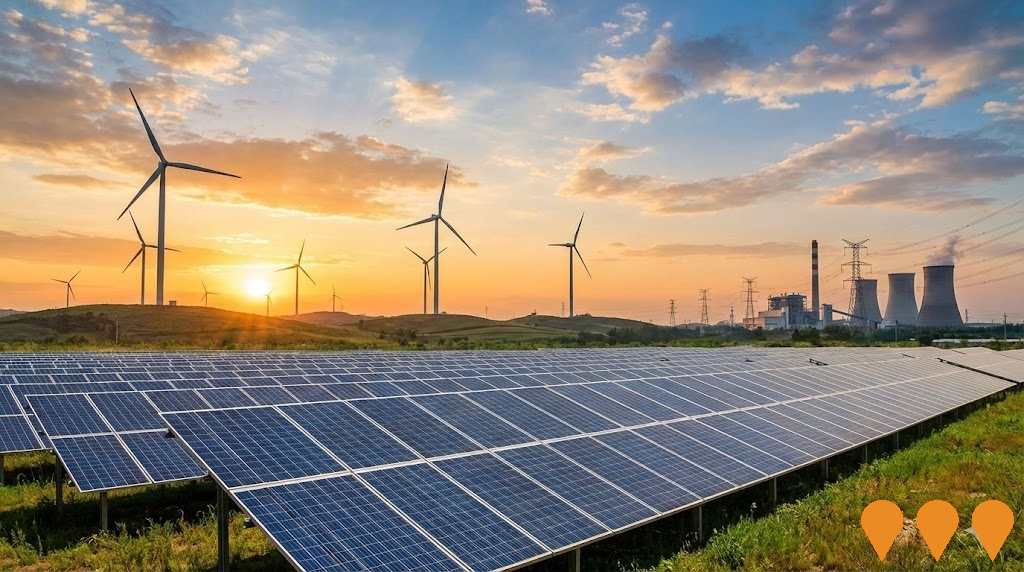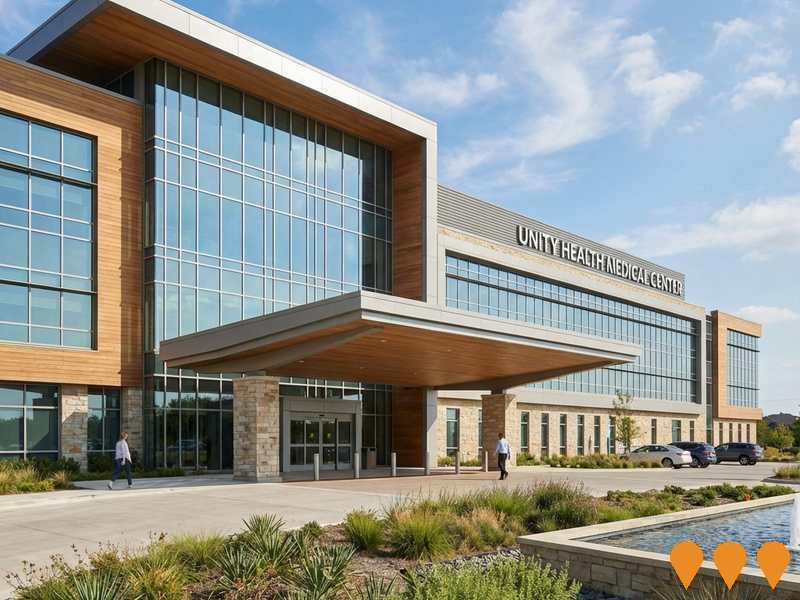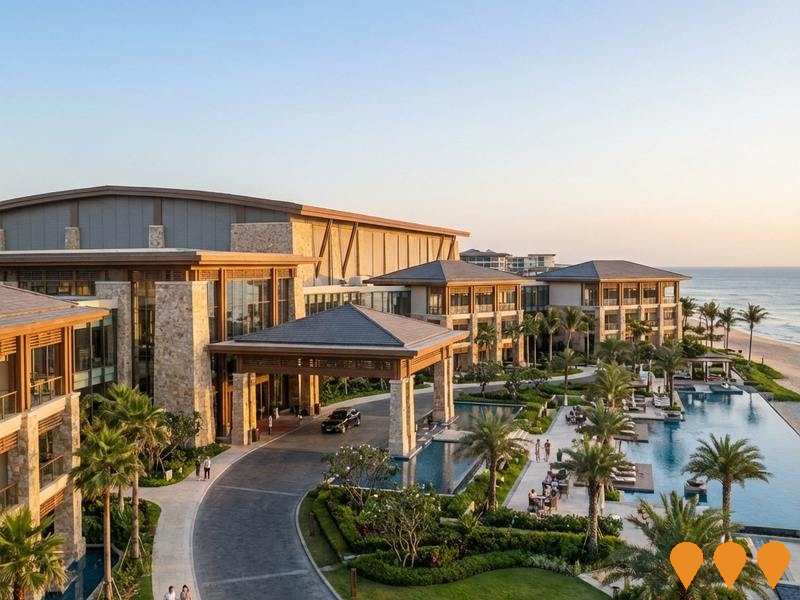Chart Color Schemes
est. as @ -- *
ABS ERP | -- people | --
2021 Census | -- people
Sales Activity
Curious about local property values? Filter the chart to assess the volume and appreciation (including resales) trends and regional comparisons, or scroll to the map below view this information at an individual property level.
Find a Recent Sale
Sales Detail
Population
Longreach has shown very soft population growth performance across periods assessed by AreaSearch
Based on AreaSearch's analysis, Longreach's population is around 3758 as of Aug 2025. This reflects an increase of 111 people since the 2021 Census, which reported a population of 3647 people. The change is inferred from the estimated resident population of 3758 from the ABS as of June 2024 and an additional 53 validated new addresses since the Census date. This level of population equates to a density ratio of 0.10 persons per square kilometer. Over the past decade, Longreach has demonstrated resilient growth patterns with a -0.7% compound annual growth rate, outpacing the SA3 area. Population growth for the area was primarily driven by overseas migration that contributed approximately 59.6% of overall population gains during recent periods.
AreaSearch is adopting ABS/Geoscience Australia projections for each SA2 area, as released in 2024 with 2022 as the base year. For any SA2 areas not covered by this data, and for years post-2032, Queensland State Government's SA2 area projections are adopted, released in 2023 and based on 2021 data. It should be noted that these state projections do not provide age category splits; hence where utilised, AreaSearch is applying proportional growth weightings in line with the ABS Greater Capital Region projections for each age cohort, released in 2023 based on 2022 data. Anticipating future population dynamics, projections indicate a decline in overall population, with the area's population expected to contract by 139 persons by 2041 according to this methodology. However, growth across specific age cohorts is anticipated, led by the 75 to 84 age group, which is projected to grow by 102 people.
Frequently Asked Questions - Population
Development
Residential development activity is lower than average in Longreach according to AreaSearch's national comparison of local real estate markets
Longreach has averaged approximately 9 new dwelling approvals annually over the past five financial years, totalling 45 homes. As of FY-26, 1 approval has been recorded to date. On average, 2.3 people have moved to the area per new home constructed over the past five financial years (FY-21 to FY-25), indicating solid demand that supports property values. New homes are being built at an average expected construction cost value of $495,000, consistent with regional patterns.
This year, $1.8 million in commercial approvals have been registered, demonstrating the area's residential nature. Compared to the Rest of Qld, Longreach shows moderately higher building activity, 14.0% above the regional average per person over the five-year period, while maintaining good buyer choice and supporting existing property values. However, this activity is under the national average, suggesting the area's established nature and potential planning limitations. Recent construction comprises 62.0% standalone homes and 38.0% attached dwellings, marking a significant departure from existing housing patterns (currently 90.0% houses), possibly due to diminishing developable land availability and evolving lifestyle preferences. Longreach reflects a low density area with around 321 people per approval.
Population projections indicate stability or decline, suggesting reduced housing demand pressures, which could benefit potential buyers.
Frequently Asked Questions - Development
Infrastructure
Longreach has emerging levels of nearby infrastructure activity, ranking in the 36thth percentile nationally
Changes to local infrastructure significantly influence an area's performance. AreaSearch has identified 11 projects that may impact the area. Notable projects include Teal Street Affordable Housing Project, Longreach Recreational Precinct, Longreach Water Security for Growth, and Longreach Solar Farm. The following list details those most relevant.
Professional plan users can use the search below to filter and access additional projects.
INFRASTRUCTURE SEARCH
 Denotes AI-based impression for illustrative purposes only, not to be taken as definitive under any circumstances. Please follow links and conduct other investigations from the project's source for actual imagery. Developers and project owners wishing us to use original imagery please Contact Us and we will do so.
Denotes AI-based impression for illustrative purposes only, not to be taken as definitive under any circumstances. Please follow links and conduct other investigations from the project's source for actual imagery. Developers and project owners wishing us to use original imagery please Contact Us and we will do so.
Frequently Asked Questions - Infrastructure
Queensland Energy and Jobs Plan
State-wide renewable energy transformation program delivering large-scale wind, solar, pumped hydro, battery storage and transmission infrastructure. Aims for 70% renewable energy by 2032 and 80% by 2035, supporting 100,000 jobs by 2040 across regional Queensland. Largest clean energy investment program in Australia.
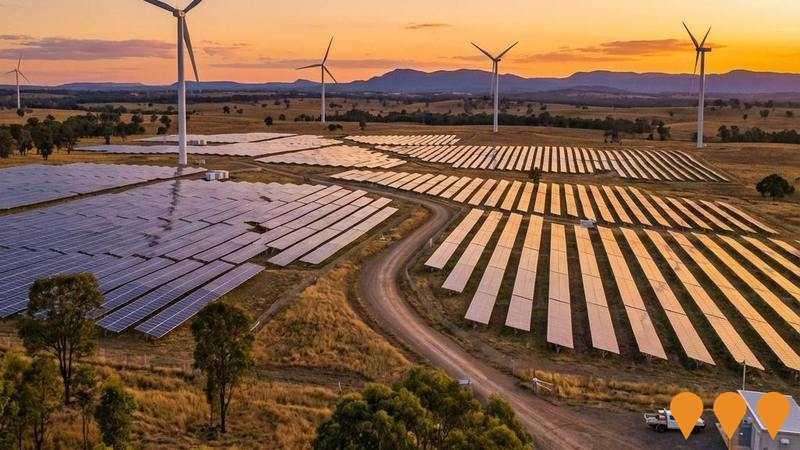
Queensland Energy and Jobs Plan
The Queensland Energy and Jobs Plan is a $62 billion+ statewide program to deliver publicly owned renewable energy generation, large-scale battery and pumped hydro storage, and the Queensland SuperGrid transmission backbone. Targets: 50% renewables by 2030, 70% by 2032, 80% by 2035. Multiple projects are now under construction including CopperString 2032, Pioneer-Burdekin Pumped Hydro, and numerous Renewable Energy Zones.
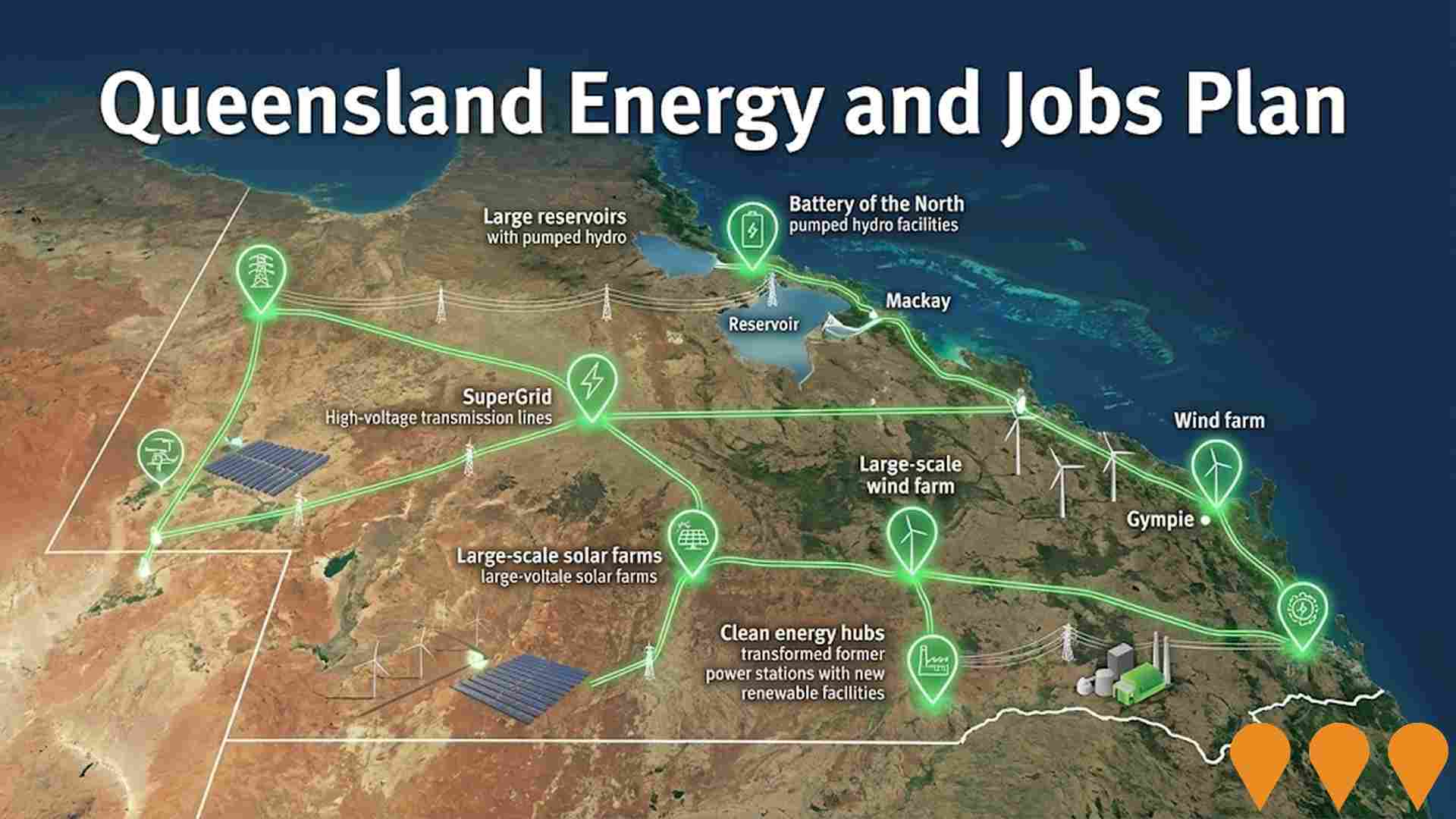
CopperString 2032
CopperString 2032 is a 1,100 km high-voltage transmission project (including spurs) connecting the North West Minerals Province to the National Electricity Market for the first time. The 500 kV line runs from just south of Townsville to Mount Isa, with construction underway since mid-2024. Fully funded with Queensland Government ownership, it will unlock large-scale renewable generation and critical minerals projects in north-west Queensland. Expected energisation by late 2029.
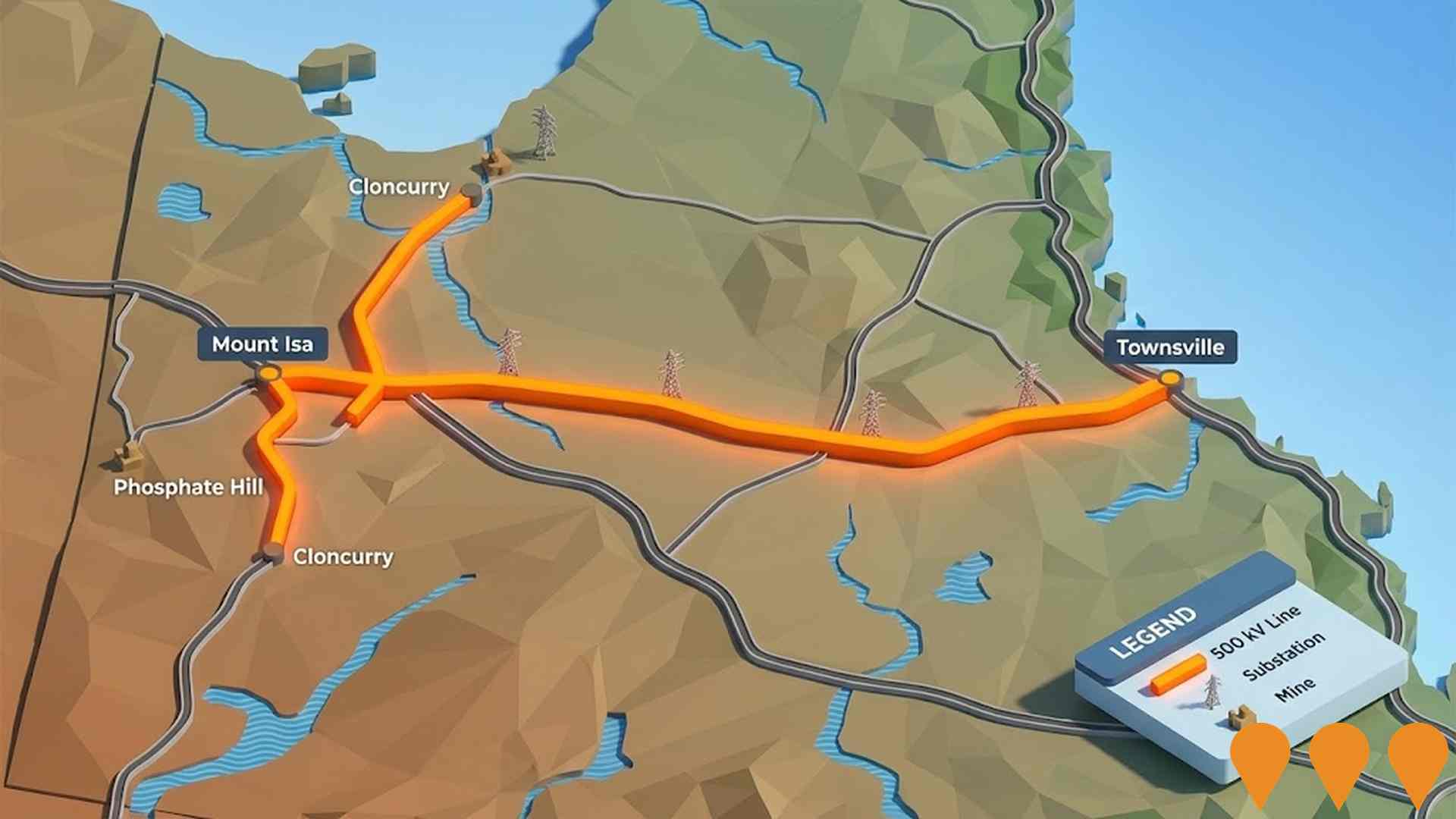
Residential Activation Fund - Central Queensland Allocation
Part of the $2 billion Residential Activation Fund with at least 50% allocated outside SEQ. Potential infrastructure to support residential housing developments in regional areas including trunk infrastructure, water, sewerage, and roads.
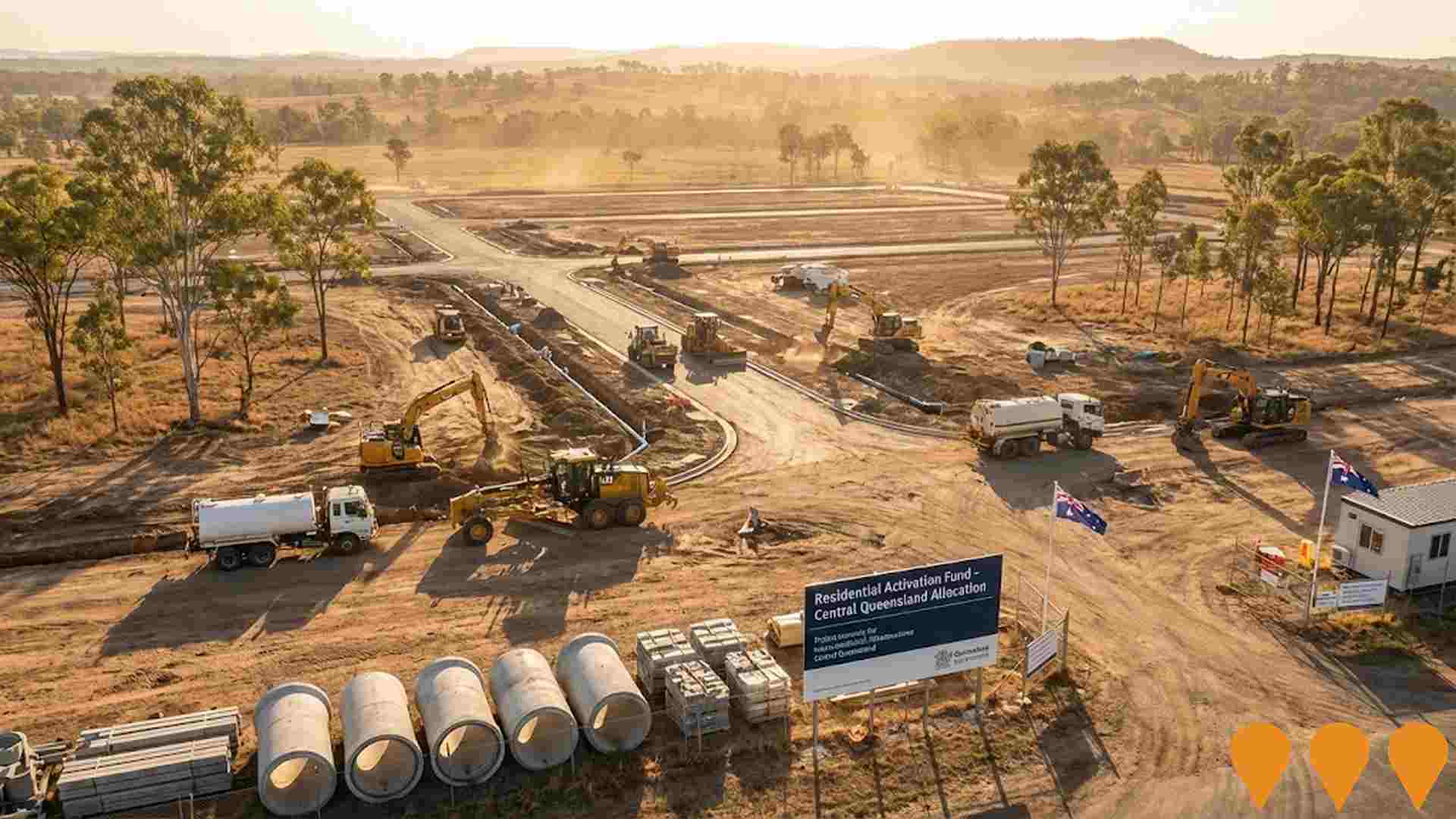
Outback Way Sealing Project - Queensland Section
Part of the $1 billion national Outback Way project to seal the 2,700km transcontinental route. The Queensland section includes upgrades to roads near Ilfracombe, improving freight efficiency, tourism access, and economic opportunities for remote communities.
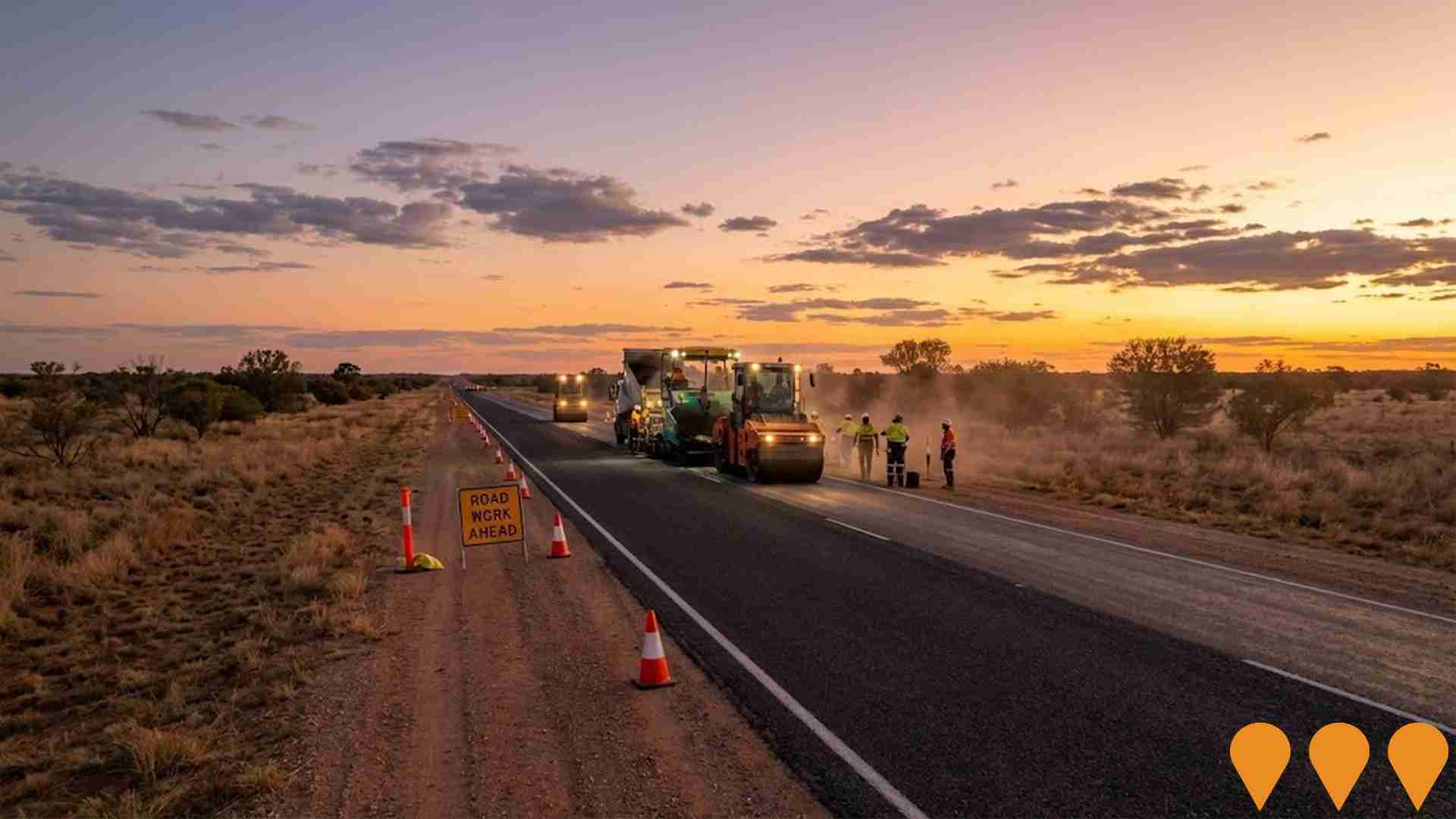
Central Queensland Digital Infrastructure Program
Regional telecommunications infrastructure improvements to support digital services, e-commerce, telemedicine, and education delivery to remote communities. Part of broader digital connectivity initiatives for Central and Western Queensland.
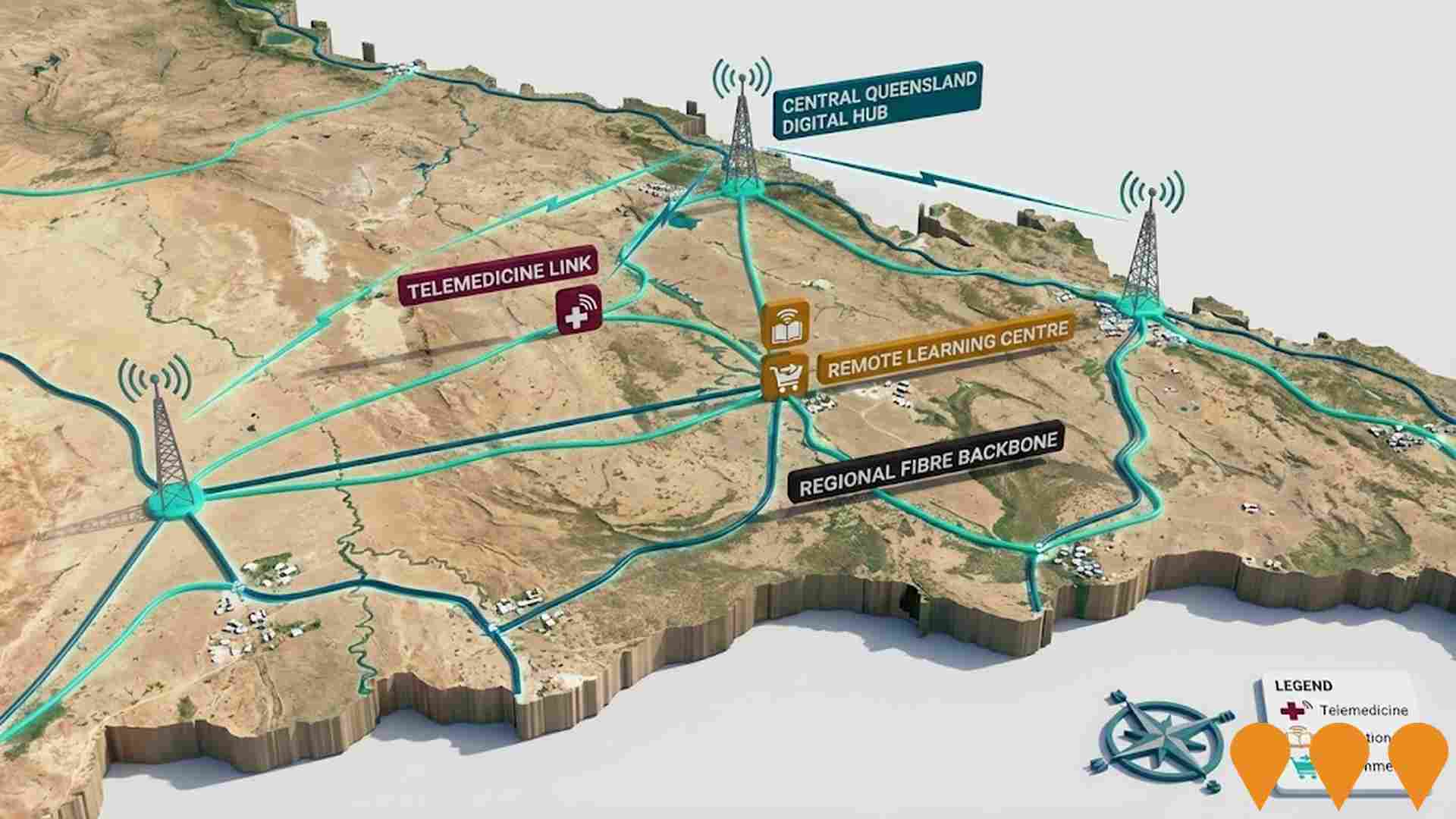
Central Western Railway Line Maintenance Program
Ongoing maintenance and upgrade program for the Central Western railway line that passes through Ilfracombe, connecting the town to Longreach and Brisbane. Critical transport infrastructure for the agricultural and tourism sectors.

Queensland Inland Road Network Upgrade
An early-stage proposal to upgrade inland Queensland roads, improving safety, productivity, and addressing issues like flooding and deteriorating infrastructure to support regional communities and freight movement.
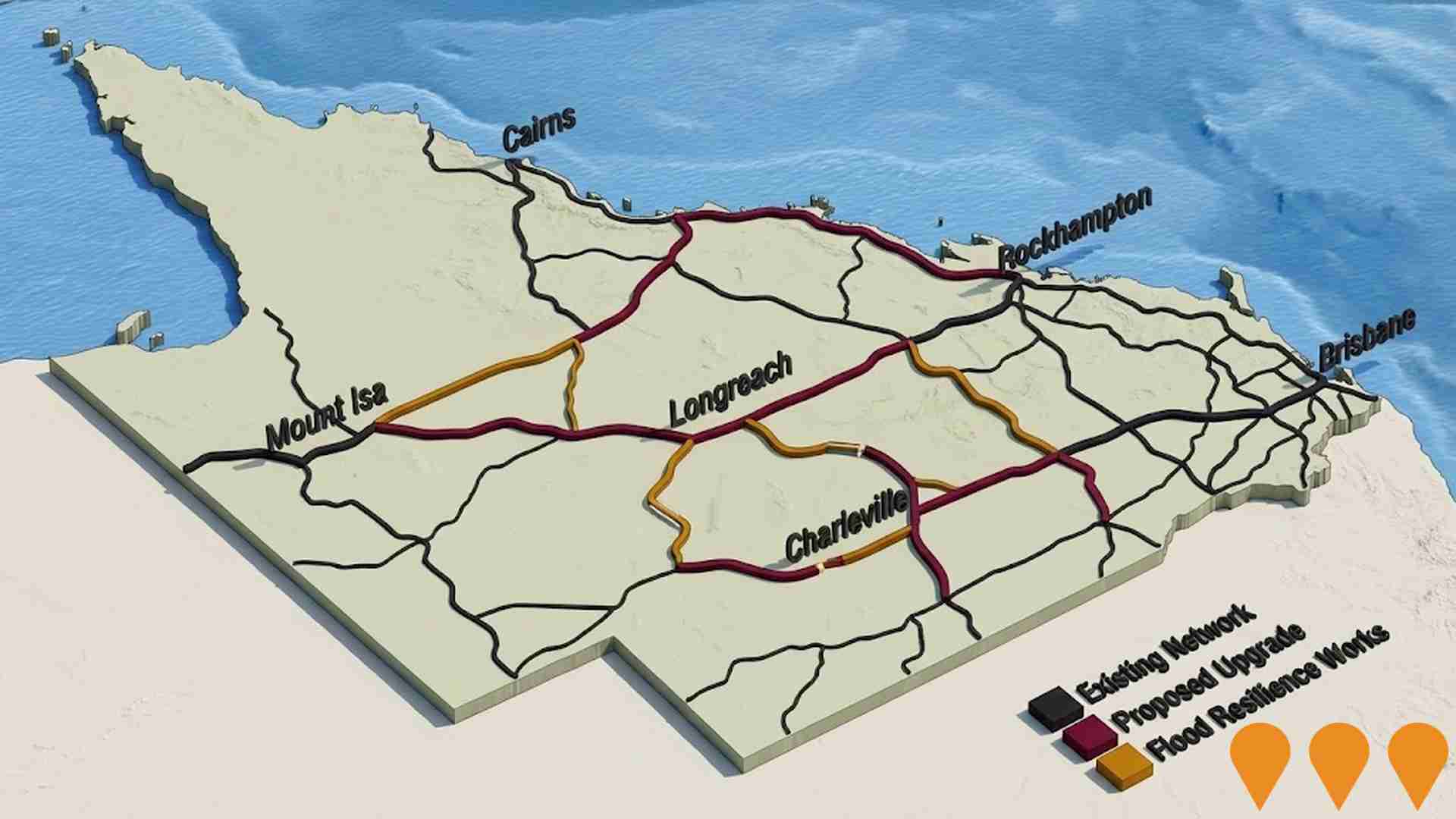
Employment
AreaSearch analysis of employment trends sees Longreach performing better than 90% of local markets assessed across Australia
Longreach has a skilled workforce with prominent essential services sectors. Its unemployment rate is 1.3%, lower than the Rest of Qld's 3.9%.
Employment stability was maintained over June 2024 to June 2025, during which time employment levels increased by 0.3% and labour force grew by 0.5%, raising the unemployment rate by 0.2 percentage points. Key industries include agriculture, forestry & fishing, health care & social assistance, and public administration & safety. Agriculture, forestry & fishing is particularly strong with an employment share of 3.5 times the regional level. Conversely, mining is under-represented at 0.7% compared to Rest of Qld's 3.6%.
While local jobs exist, many residents commute elsewhere for work based on Census data. Jobs and Skills Australia forecasts national employment growth of 6.6% over five years and 13.7% over ten years, with varying rates across industries. Applying these projections to Longreach's employment mix suggests local growth of approximately 5.9% over five years and 12.5% over ten years.
Frequently Asked Questions - Employment
Income
Income levels align closely with national averages, indicating typical economic conditions for Australian communities according to AreaSearch analysis
AreaSearch's latest postcode level ATO data for financial year 2022 indicates that Longreach has lower income compared to national averages. The median income is $55,089 and the average is $62,056. In contrast, Rest of Qld's median income is $50,780 with an average of $64,844. Based on Wage Price Index growth of 13.99% since financial year 2022, estimated incomes as of September 2025 would be approximately $62,796 (median) and $70,738 (average). According to the 2021 Census, personal income ranks at the 72nd percentile ($938 weekly), while household income is at the 39th percentile. Income analysis shows that the largest segment comprises 34.7% earning $1,500 - 2,999 weekly (1,304 residents). Housing costs are manageable with 90.9% retained, but disposable income is below average at the 47th percentile. The area's SEIFA income ranking places it in the 4th decile.
Frequently Asked Questions - Income
Housing
Longreach is characterized by a predominantly suburban housing profile, with a higher proportion of rental properties than the broader region
In Longreach, as per the latest Census evaluation, 89.8% of dwellings were houses, with the remaining 10.2% being semi-detached, apartments, or other types. This differs from Non-Metro Qld's figures of 92.7% houses and 7.3% other dwellings. Home ownership in Longreach stood at 35.2%, with mortgaged properties at 25.5% and rented ones at 39.2%. The median monthly mortgage repayment in the area was $1,083, compared to Non-Metro Qld's average of $910. The median weekly rent figure for Longreach was $200, lower than Non-Metro Qld's $160 and significantly below the national average of $375. Nationally, Longreach's mortgage repayments were substantially lower than the Australian average of $1,863.
Frequently Asked Questions - Housing
Household Composition
Longreach features high concentrations of lone person households, with a fairly typical median household size
Family households account for 63.3% of all households, including 24.2% couples with children, 28.3% couples without children, and 10.0% single parent families. Non-family households constitute the remaining 36.7%, with lone person households at 32.9% and group households comprising 3.5%. The median household size is 2.3 people, which aligns with the average for the Rest of Qld.
Frequently Asked Questions - Households
Local Schools & Education
Educational outcomes in Longreach fall within the lower quartile nationally, indicating opportunities for improvement in qualification attainment
The area has lower university qualification rates at 19.5%, compared to Australia's average of 30.4%. Bachelor degrees are most common at 14.3%, followed by postgraduate qualifications and graduate diplomas both at 2.6%. Vocational credentials are prevalent, with 42.9% of residents aged 15+ holding them, including advanced diplomas at 11.4% and certificates at 31.5%. Educational participation is high, with 32.0% currently enrolled in formal education: 14.4% in primary, 8.3% in secondary, and 3.6% in tertiary education.
Six schools operate in Longreach, educating approximately 724 students. The school mix includes four primary, one secondary, and one K-12 school. School capacity exceeds typical residential needs at 19.3 places per 100 residents, compared to the regional average of 14.7, indicating that Longreach serves as an educational center for the broader region.
Frequently Asked Questions - Education
Schools Detail
Nearby Services & Amenities
Transport
No public transport data available for this catchment area.
Frequently Asked Questions - Transport
Transport Stops Detail
Health
Health outcomes in Longreach are marginally below the national average with common health conditions slightly more prevalent than average across both younger and older age cohorts
Health indicators show below-average outcomes in Longreach, with common health conditions slightly more prevalent than average across both younger and older age cohorts.
The rate of private health cover is relatively low at approximately 51% of the total population (~1,901 people). Mental health issues impact 7.6% of residents, while asthma affects 7.4%. A total of 68.8% declare themselves completely clear of medical ailments, compared to 67.5% across Rest of Qld. The area has 18.6% of residents aged 65 and over (697 people), which is lower than the 20.1% in Rest of Qld. Health outcomes among seniors are above average, performing better than the general population in health metrics.
Frequently Asked Questions - Health
Cultural Diversity
Longreach is considerably less culturally diverse than average when assessed alongside AreaSearch's national rankings for language and cultural background related metrics
Longreach, surveyed in 2016, showed limited cultural diversity with 83.1% of its population being citizens, 91.2% born in Australia, and 96.1% speaking English only at home. Christianity was the predominant religion, accounting for 65.9%, slightly lower than the Rest of Qld's 66.5%. The top three ancestral groups were Australian (32.0%), English (30.6%), and Irish (9.5%).
Notable differences included Maori representation at 1.0% in Longreach, compared to 0.4% regionally, German at 4.8% vs 4.6%, and Scottish at 8.7% vs 7.6%.
Frequently Asked Questions - Diversity
Age
Longreach's population is slightly older than the national pattern
The median age in Longreach is 39 years, which is lower than Rest of Qld's average of 41 but close to the national average of 38 years. The age profile shows that 25-34 year-olds are prominent at 14.7%, while the 75-84 group is smaller at 5.6%. Between 2021 and present, the 25-34 age group grew from 12.8% to 14.7%, and the 75-84 cohort increased from 4.5% to 5.6%. Conversely, the 55-64 cohort declined from 15.0% to 12.6%. By 2041, demographic projections show significant shifts in Longreach's age structure. The 75-84 age cohort is projected to increase by 87 people (41%) from 211 to 299. Notably, the combined 65+ age groups will account for 63% of total population growth. Meanwhile, the 0-4 and 35-44 cohorts are expected to experience population declines.
